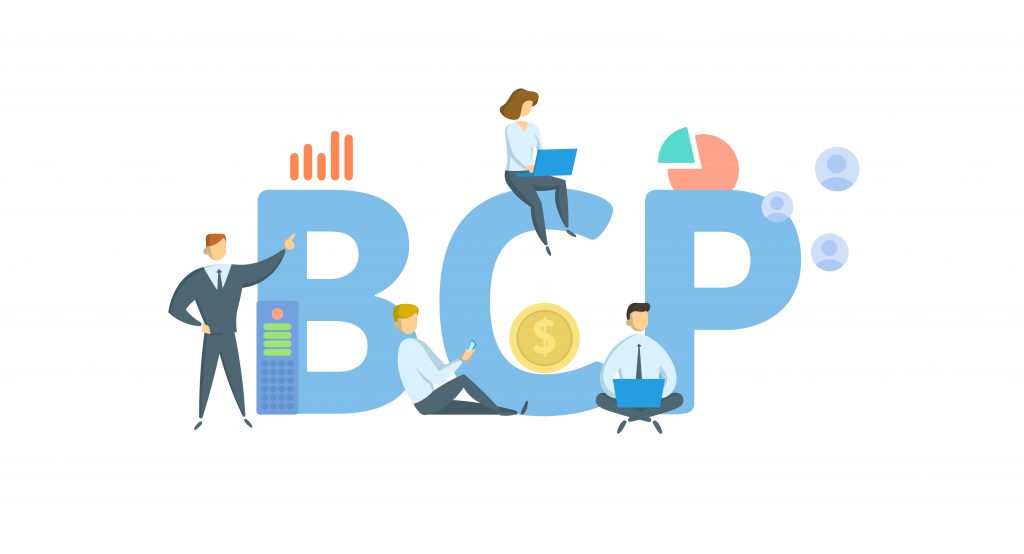Secure the continuity of your business with Google Cloud Platform
Today, business continuity is one of the priorities of technology managers, given the proliferation of attacks and risks that IT infrastructures are subjected to every day. These increasingly sophisticated cyber threats and widespread remote working have blurred the boundaries to be secured and have demonstrated the need to have a Business Continuity Plan (BCP) that mitigates the risks and prevents disaster.

Years ago, only large companies with lots of resources seriously considered having a business continuity plan. Nowadays, this scenario has changed, and small and medium sized businesses need to meet this challenge.
Much further beyond a backup of data or servers, now it is necessary to have robust and fault-tolerant applications and infrastructures that are able to continue working in the face of any unforeseen events, just as we have seen over the last year.
For many organisations, embarking on a business continuity plan has, therefore, become a priority, which is why the aim of this article is to help you to prepare your organisation to face disasters and recover from unavoidable setbacks.
Robustness, flexibility and profitability
Can you spend eight hours without providing a service to your customers or to your employees? And an hour? And just half an hour? What degree of availability do you really need for your applications and services? It is clear that, the more critical the data is for the business, the more necessary it becomes to have a Disaster Recovery, or DR plan.
Is your organisation prepared in the event of a collapse of a non-redundant system? Is it prepared in the event of a disaster of any physical infrastructure, an access failure or corruption of data, whether due to loss of information or a malware attack?
In the light of these questions, there can be no doubt that we need flexible, solid and, of course, profitable solutions. Here the cloud provides all of the advantages compared to classic on-premise infrastructures.
The cycle of a Business Continuity Plan
Ideally, we would have a plan that prepares us in the face of an unforeseen event, whether it is disaster recovery, high availability, backup or working securely from anywhere. But, first of all, it is important to define the roadmap for the project to be completely realistic. At Intelligence Partner, we propose a cycle to our clients based on four phases:
- Identify and understand the risk
- Analyse the impact on the business
- Create a strategy and develop a plan that enables us to give continuity to the company’s strategic business
- 4) Evaluate, test and maintain. Once designed, the plan should be alive, because companies evolve and their needs change
For the plan to be as dynamic and automated as possible, we suggest adapting the model to a public cloud environment like Google Cloud Platform (GCP), which doesn’t become obsolete like on-premise infrastructures up until now.
The eight advantages of Google Cloud Platform
It is possible that, at this point, you are thinking that perhaps your organisation doesn’t need a Disaster & Recovery plan but, if in doubt, remember Murphy’s Law: “Carrying an umbrella when rain is forecast makes rain less likely to fall”.
Below we explain why, at Intelligence Partner, we opt for Google Cloud Platform for our business continuity plans.
- Data encryption by default. On the Google Cloud Platform, all of the data uploaded is encrypted by default and encryption keys provided by the client can be used.
- Google Drive. If we prevent users from having data on-premise, we prevent the risk of malware. By turning Google Drive into your main repository, we will be able to prevent the theft and loss of information.
- Networking. Google uses its own data network to interconnect its areas and regions. To further reinforce this interconnection, Grace Hopper will be the cable that connects the US and UK with Spain in 2022 to open up the Madrid region.
- Regulations and compliance. In all of its regions, Google meets multiple European and international regulations. As a specific Spanish regulation, it complies with the National Security Framework (ENS).
- Geographical redundancy. Google uses services available worldwide based on multiple regions, enabling various areas of one region to be used with maximum efficiency.
- Managed services. We should take advantage of managed services wherever possible; they are easily scalable and have a High native Availability based on Service Level Objectives (SLOs) that reach 99.99%.
- High availability. Implementing a high availability design pattern for self-managed applications, taking advantage of the global load balancers.
- Automation. Implementing the automation of deployment and activating Infrastructures is key to minimising human errors.
How to approach a Disaster Recovery project?
At Intelligence Partner we have a wealth of experience in business continuity projects. Our actions is based on three main pillars:
- Design of the Plan. In this phase we analyse the applications, assess the needs, design the target plan with the client’s IT team and we validate it.
- Definition of processes and procedures. We draft the plan, together we design the scope of the monitoring, design the automatisms and we test the plan to check its effectiveness.
- Support and maintenance. We accompany the client, if necessary, when it comes to activating the plan, we plan at least two tests together each year to check the health of the plan and, within the model of support and lifecycle of the plan, we adapt it to the client’s new services and applications.
Do you want to know how Google Cloud Platform can become your best ally to secure the continuity of your business? You just need to contact us.
Shall we start?


